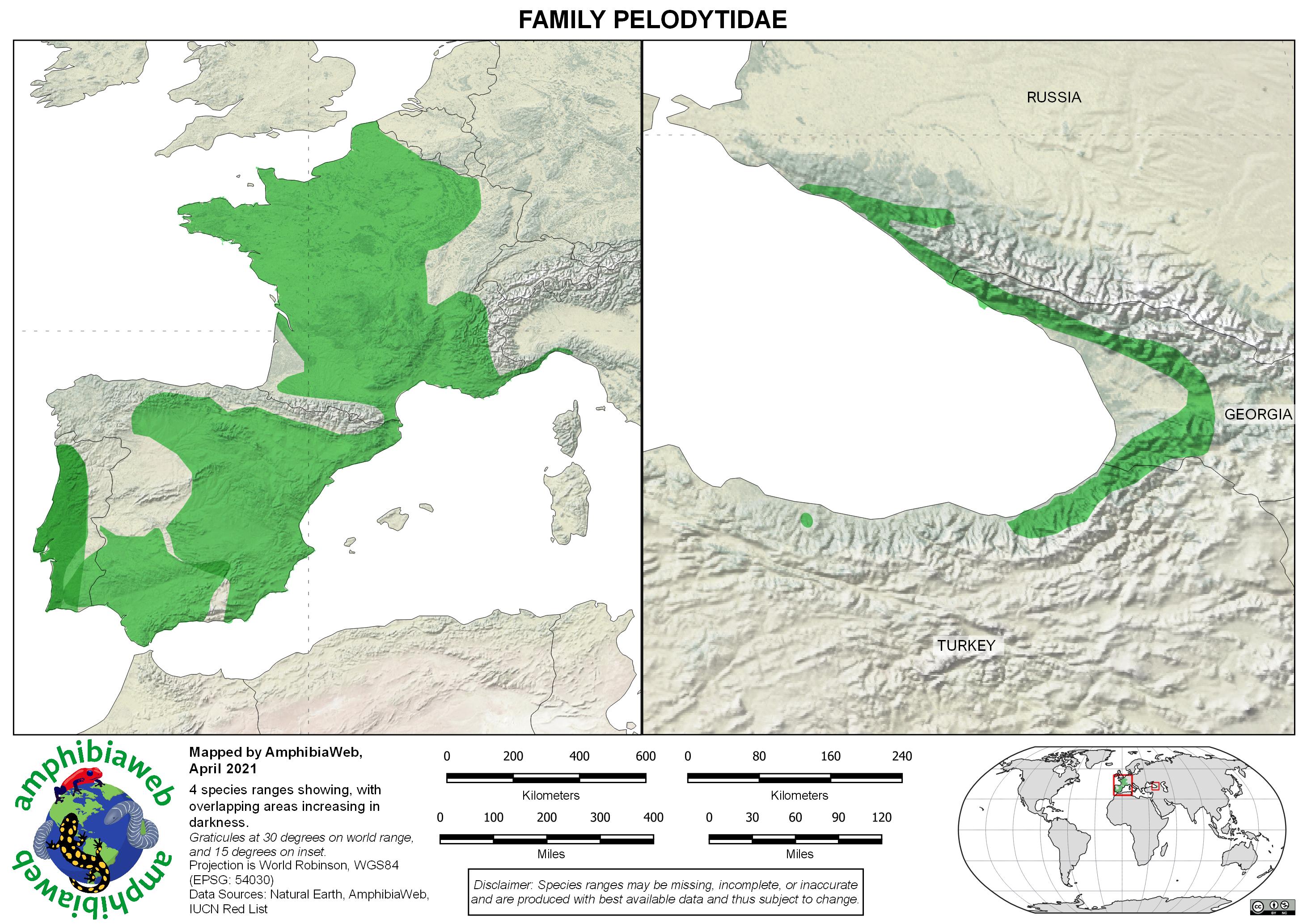Pelodytidae |
5 species in 1 genus
Commonly Called Parsley Frogs

Pelodytes ibericus
Photo by Wouter Beukema
(Click for family gallery)These frogs are small species with bulging eyes and are known as "parsley frogs" due to the coloration of Pelodytes punctatus resembling green parsley. This nocturnal group may become diurnal during the breeding season when males call underwater and breed in water bodies where their tadpoles hatch.
Pelodytidae was formerly contained within Pelobatidae; however, it was elevated to its own family mainly because of the fused astragalus and calcaneum, an unusual morphology in frogs (only also known in centrolenid frogs). Recent molecular work shows this family as sister to the clade formed by Megophryidae and Pelobatidae.
Written by AmphibiaWebNotable Family Characteristics
- Terrestrial
- Nocturnal except for the breeding season when they may be active during the day
- Eggs laid in water to hatch into tadpoles
- Morphological characters include: 1) fused astragalus and calcaneum (also in some centrolenids); 2) presence of a parahyoid bone in the hyoid apparatus (also in Rhinophrynus and paleobatrachids); 3) fused vertebrae I and II; 4) three tarsalia bones in foot.
- Distribution limited to western Europe, especially in the Iberian Peninsula, and in western Asia

Cartography Credit: Zoe Yoo, UC Berkeley
Range maps sources: AmphibiaWeb, UC Berkeley, and IUCN RedListRelevant Reference
Pough, F. H., R. M. Andrews, M. L. Crump, A. H. Savitzky, K. D. Wells, and M. C. Brandley. 2015. Herpetology. Fourth Edition. Massachusetts: Sinauer.
Vitt, L. J., and J. P. Caldwell. 2013. Herpetology. An Introductory Biology of Amphibians and Reptiles. Fourth Edition. Amsterdam: Elsevier.
Genus Pelodytes (5 species)
Pelodytes atlanticus no account photos no sound/video Pelodytes caucasicus account photos no sound/video Pelodytes hespericus no account no photos no sound/video Pelodytes ibericus account photos no sound/video Pelodytes punctatus account photos no sound/video
Citation: AmphibiaWeb: Information on amphibian biology and conservation. [web application]. Berkeley, California: AmphibiaWeb. Available: https://amphibiaweb.org/. (Accessed:
AmphibiaWeb's policy on data use.
